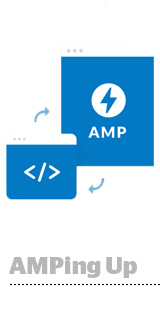
Stories. It seems like everybody’s got ‘em, from Snap and LinkedIn to Instagram and Facebook – and now Google.
But while AMP Stories might look like a knockoff of the other guys, it’s actually quite a different animal.
What’s the story?
The main difference: AMP Stories are specifically designed for publishers to create full-screen experiences for accelerated mobile pages, the technology Google developed to speed up page load time by pre-caching publisher content. AMP Stories can include any rich media element, from sound and video to static images, text and motion graphics.
Unlike Facebook or Instagram Stories, which live within their respective platforms, AMP Stories are web-based, so publishers can integrate them directly into their own websites. They’re also searchable through Google across desktop and the mobile web.
That means publishers aren’t locked into a walled garden platform, and they have the opportunity to unlock new revenue streams.
“Let’s face it, publishers today need as much help as they can get,” said Kargo CEO Harry Kargman.
After launching a test at the beginning of the year with a handful of publishers, including CNN, The Washington Post, Mic and Meredith, Google brought AMP Stories out of beta in mid-November and rolled out support for direct-sold Stories ads through Google Ad Manager (formerly DoubleClick).
AMP has integrations with around 100 ad networks and exchanges, including InMobi, Kargo, Yieldmo, Unruly, OpenX and AppNexus. On the measurement front, publishers can either use the built-in AMP analytics framework to partner with a third-party vendor or send engagement data in house, or they can rely on the basic reporting functions they get from Google Ad Manager.
Why buy?
Publishers can tap into the full-screen palette of an AMP Story to tell, well, an engaging story [click here for an example in The Washington Post]. But the larger enticement is that they can monetize that engagement without sharing the revenue. And, better yet, they can monetize through their existing ad servers, which makes the Story relatively easy to implement.
“Of course, this is also in Google’s interest given that publishers tend to use the Google ad-serving stack for the open internet,” Kargman said.
Scale, though?
New monetization opportunities always sound promising, but scale is a perennial challenge. Before publishers can attract advertisers, they’ll need to find and build audiences – something that the walled gardens don’t have to worry about as much.
 Google can rely on search to help drum up scale – Stories are discoverable through its search engine – but it’s not always easy to find an AMP Story in the wild.
Google can rely on search to help drum up scale – Stories are discoverable through its search engine – but it’s not always easy to find an AMP Story in the wild.
One possible reason for the dearth: To build an experience for AMP Stories, publishers need a basic working knowledge of HTML, CSS and Javascript, including an understanding of how to convert these languages to conform with AMP’s specifications.
If Google made the process easier by developing a tool that automatically converted publishers’ Instagram Stories into AMP Stories, for example, more publishers would likely participate, Kargman said.
On the advertising front, however, lots of buyers already have vertical assets they’ve created for Stories on other platforms, which means it would be relatively easily to test AMP Stories ads without whipping up something from scratch – if they can be convinced the experimental budget is worthwhile.
Google declined to share numbers for AMP Stories adoption, other than to say it’s “working on improvements” to the format and on additional places where Stories may appear. A Google spokesperson said engagement is trending in the right direction but wouldn’t disclose more detailed information.
This post was syndicated from Ad Exchanger.


More Stories
Scroll Media boosts in-game advertising with new feature
Kiwi filmmaker spotlights media struggles at top global awards
T-Mobile Has Appointed Kristin Harrer As Senior Vice President and Chief Brand Officer